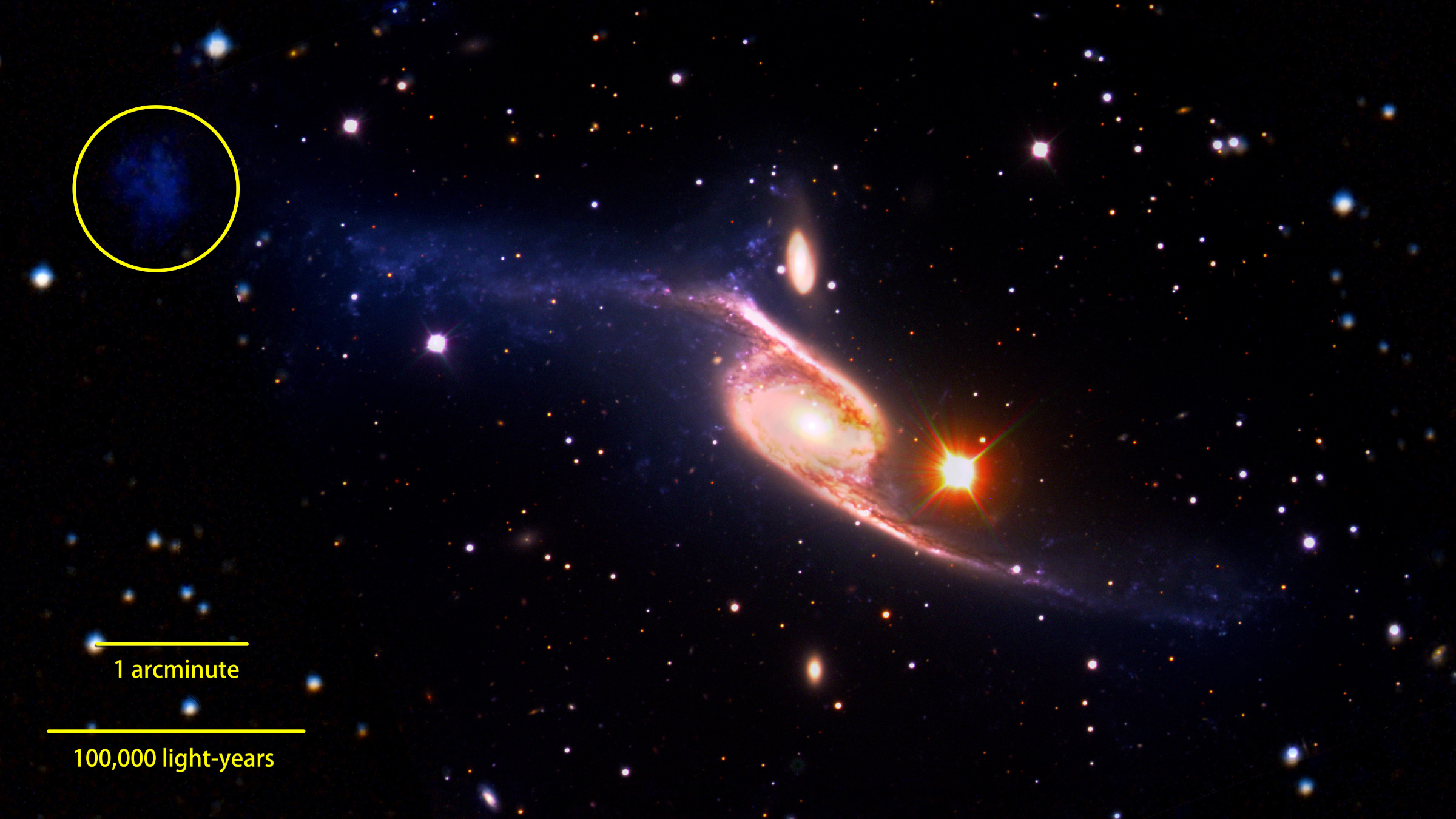Three telescopes, two of which belong to NASA, have brought their data together to create a spectacular image. The image, which was originally revealed back in January 2013, is a composite of a giant barred spiral galaxy known as NGC 6872. This beautiful and shining galaxy is believed to be the largest known spiral galaxy that humanity has ever uncovered.
The NGC 6872 is ranked among the largest known spiral galaxies for a reason, measuring more than 522,000 light-years from tip to tip. That’s a massive size. In comparison, our own Milky Way galaxy is estimated to be only 100,000 light-years across. And this great barred spiral galaxy has held that title for decades, despite all the discoveries astronomers have made, especially in recent years.
NASA says that the galaxy’s unusual size and appearance most likely stem from interactions with IC 4970, a much smaller disk galaxy that is around one-fifth the mass of NGC 6872. The largest known spiral galaxy and its neighbor are located a staggering 212 million light-years from Earth, somewhere within the southern constellation of Pavo.

What’s even more intriguing about this galactic couple, though, is that the interactions between them may actually spawn a new, smaller galaxy. Normally when two galaxies come close together like this they merge, something that we’ve captured in action using the James Webb space telescope. But the largest known spiral galaxy and its companion seem to have other plans in the works.
The new smaller galaxy is believed to be a tidal dwarf galaxy similar to what we’ve seen in other systems. It’s brighter in ultraviolet than other regions of the galaxy, which could be a sign that it is home to stars less than 200 million years old.
While this image might be older, it’s still a grand reminder of just how important it can be to pull data together. That’s because this glimpse at the largest known spiral galaxy is only possible because of data gathered by European Southern Observatory’s Very Large Telescope, combined with far-ultraviolet data from NASA’s GALEX and 3.6-micron infrared data acquired by NASA’s Spitzer Space Telescope.








